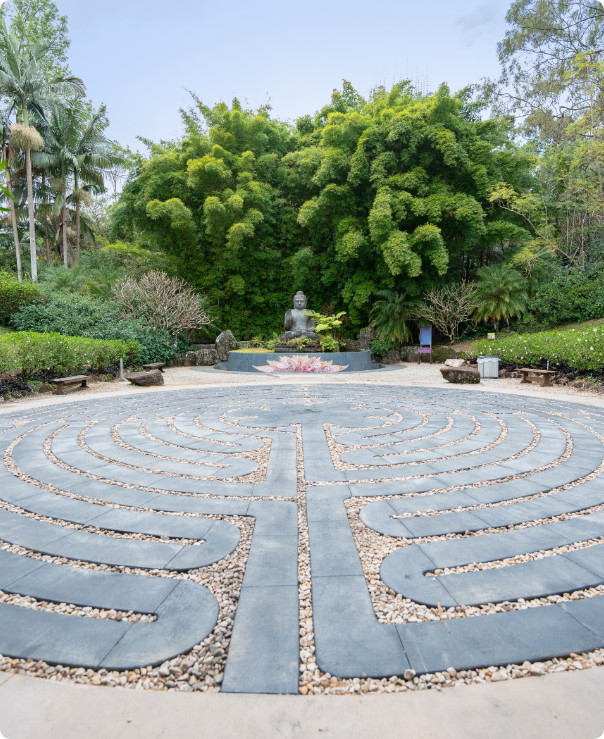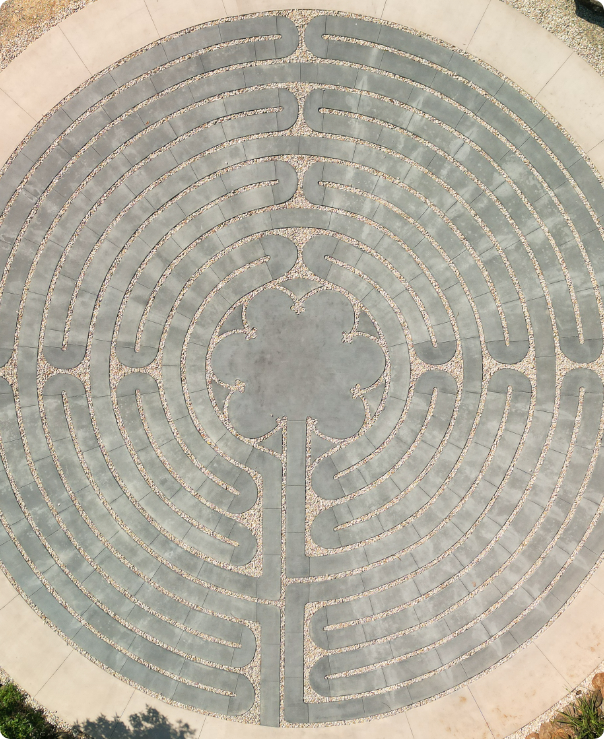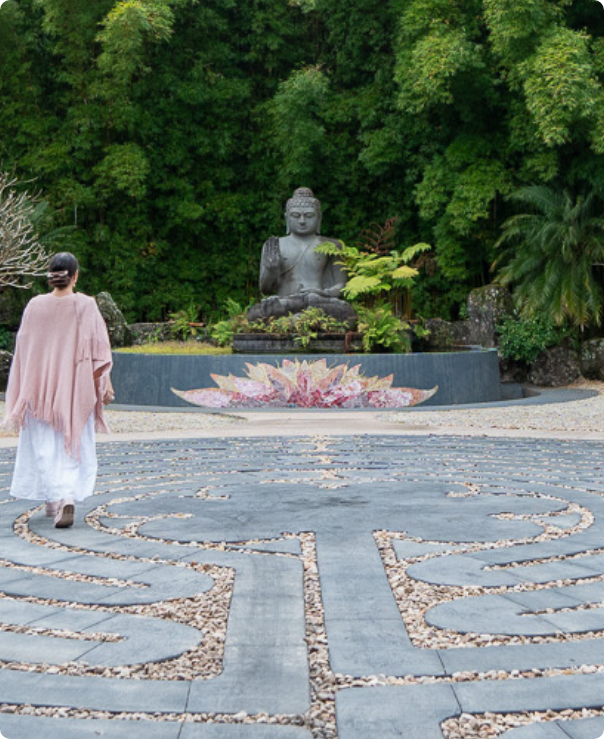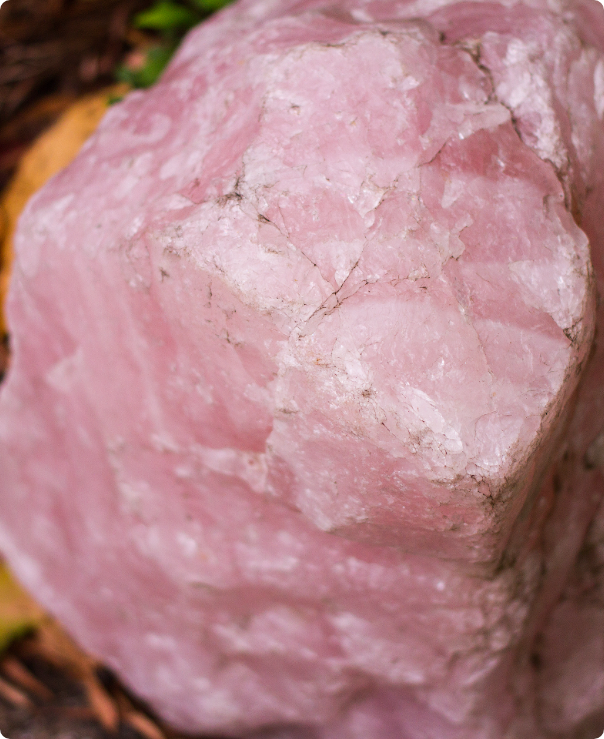@media (min-width: 768px) {
.headerMenuContainer .menu-item-has-children:hover > .sub-menu {
width: 212.88px !important;
}
}
@media (min-width: 768px) {
.headerMenuContainer .elementor-nav-menu li {
width: 100%;
}
}
Crystal Castle’s world-unique Crystal Labyrinth, designed using sacred geometry and with a half-kilometre walking path, stands proudly in front of our majestic four-metre Blessing Buddha statue.
Labyrinths are meditative pathways that have power, beauty and significance. Unlike a maze (which is essentially a type of puzzle designed to confuse), a labyrinth is a complex, single winding path for walking on, in a meditative or contemplative way.


Designed according to principles of sacred geometry, labyrinths are directional and they always lead to the centre and then back out again in one unbroken path. The mysterious winding path that takes us to the centre is symbolic of entering the unknown. It becomes a metaphor for our journey of self-inquiry.
At the heart of Crystal Castle is the Blessing Buddha amphitheatre. We’ve positioned our new Crystal Labyrinth directly in front of our giant four-metre high Blessing Buddha. Inspired by the labyrinth at France’s Chartres Cathedral, which is over 800 years old, our Crystal Labyrinth mirrors the same ancient sacred geometry as the original Cathedral.

Our Crystal Labyrinth will soon have over 10,000 rose quartz crystals set into mortar between all of its pathways. Underneath these pieces of rose quartz will be thousands of intention cards where visitors have written their messages of love, hope and peace. In this way, Crystal Castle seeks to offer a meaningful visitor journey that is unique in the world.

The sacred space of the Crystal Labyrinth marks the evolution of what was once a barren old dam at Crystal Castle into a space of reflection and beauty. Learn about the purpose and history of labyrinths.

A labyrinth is an ancient archetypal symbol found in spiritual traditions worldwide. Unlike a maze, which is a puzzle with multiple paths and dead ends, a labyrinth has a single, purposeful path leading to the centre and back out again. It symbolises a meditative journey and self-inquiry.
Labyrinths have traditionally been located on sacred sites or energy vortices across the globe, serving as tools for meditation and insight. Walking the winding path represents a journey into the unknown, offering a space for reflection, inspiration, and transformation.
Walking the labyrinth’s path is believed to activate neurological pathways between the brain’s left and right hemispheres, encouraging a shift in perspective and promoting clarity of thought.
Labyrinths have been discovered in diverse cultures, from India and Java to Arizona, Crete, Egypt, and Europe. Their designs date back to the Neolithic era, appearing in early Minoan civilizations and continuing into the Middle Ages.
In the Middle Ages, an eleven-circuit labyrinth divided into four quadrants became popular, and is often featured in Gothic cathedrals. The most famous example, created around 1200 AD, is the labyrinth at Chartres Cathedral near Paris.
The Crystal Labyrinth, at Crystal Castle, was created in 2024, and is based on the historic Chartres design.
Located in the Shambhala Gardens, it incorporates the sacred geometry of this timeless symbol, inviting you to embark on a meditative journey amidst the serene beauty of the gardens.

From a humble house with a barren dam to magnificent,
private botanic gardens filled with rare and giant crystals.
The extraordinary story of Crystal Castle!

Open Every Day 10am – 5pm Closed Christmas Day, Boxing Day and Good Friday
81 Monet Drive, Montecollum, NSW, 2482 Crystal Castle & Shambhala Gardens © 2024. All rights reserved
We acknowledge the traditional custodians of this land, the Arakwal people and the Widjabul Wia-bal people of the Bundjalung Nation. We pay our respects to elders past and present and extend that respect to all First Nations people today.
Open Every Day 10am – 5pm NSW time. Last entry 4pm.
Closed Good Friday, Christmas Day and Boxing Day.
81 Monet Drive, Montecollum, NSW, 2482 Australia.
Crystal Castle & Shambhala Gardens © 2024. All rights reserved
We acknowledge the traditional custodians of this land, the Arakwal people and the Widjabul Wia-bal people of the Bundjalung Nation. We pay our respects to elders past and present and extend that respect to all First Nations people today.